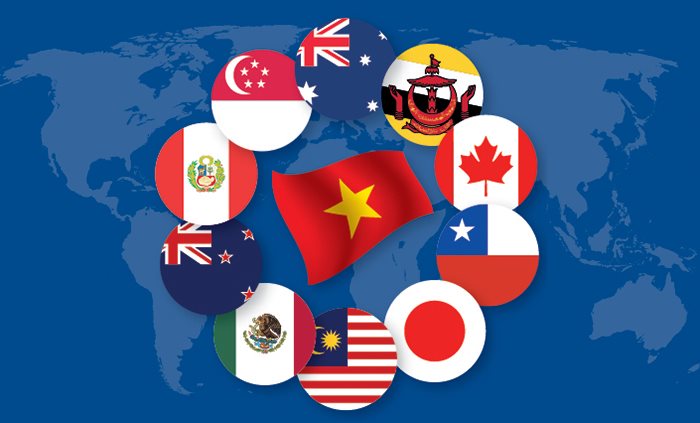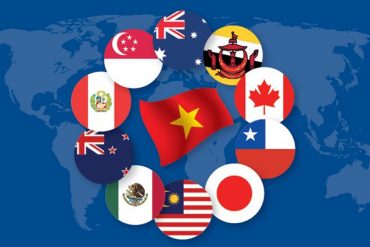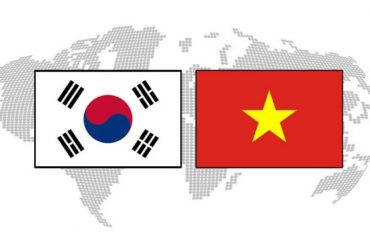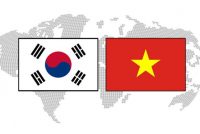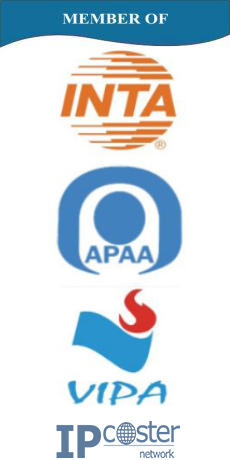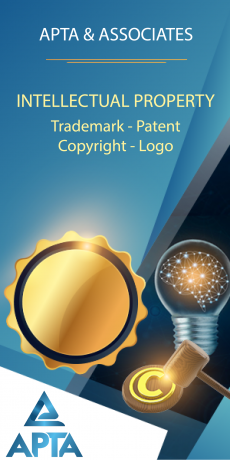The Comprehensive and Progressive Agreement for Trans-Pacific Partnership (CPTPP) has officially come into effect in Vietnam since January 14, 2019. Consisting of comprehensive commitments with high standards and balances, CPTPP is expected to strengthen the mutually beneficial link among the member economies and promote trade. Investment and economic growth in the Asia – Pacific region. The group of Intellectual Property (IP) contents stipulated in Chapter 18, including 73 articles and 04 appendices after the suspension of implementation for 10 articles and 02 appendices (E, F) compared to TPP. In which, there are many strict regulations that require Vietnam to amend the legal system on IP, especially, the regulation on trademark protection and patent protection in Vietnam to comply with the commitments in CPTPP.
1. CPTPP requires the sound trademark protection in Vietnam and encourages the scent trademark protection (Article 18.18).
This is totally a new content compared to the current practice under Vietnam IP Law that only protect a sign be visually perceptible. According to the commitment, Vietnam must adjust the IP regulations for the sound trademark protection in Vietnam within 03 years from the effective date of CPTPP.
The sound and scent trademark protection in Vietnam will help enterprises feel more reassuring and creative with their ideas. However, challenges will be set for the IP Management and Enforcement Agencies as well as Vietnamese enterprises without having much knowledge and experience about these new types of trademark.
2. Criteria for well-known trademark protection in Vietnam (Article 18.22)
CPTPP regulates the Contracting Parties shall not require as a condition for determining that a trademark is well-known that the trademark has been obtained trademark protection in several jurisdictions, included on a list of well-known trademarks, or given prior recognition as a well-known trademark. This condition remains in Vietnam IP Law and will be subject to adjust accordingly.
3. Establishment of an Electronic Trademarks System (Article 18.24)
CPTPP requires the Contracting Parties to establish a system for the electronic application for, and maintenance of trademarks; and a publicly available electronic information system, including an online database of trademark applications and of registered trademarks. Currently, Vietnam has established an electronic system for the filing and searching of trademarks, however, this system has not been completed yet and needs to be upgraded to meet the increasing demand for trademark search and trademark protection in Vietnam.
4. A licensing contract is no longer required to register(Article 18.27)
For this regulation, the National Office of Intellectual Property (NOIP) of Vietnam has already issued the guidance: “From the effective date of CPTPP in Vietnam, the contracts of licensing the use of trademarks with legal validity to a third-party, are not subject to registration at NOIP (instead of regulation at Clause 2, Article 148 of Vietnam IP Law). The use of a trademark as stipulated in Clause 5, Article 124 of Vietnam IP Law by a licensee under a licensing contract is considered an act of using the trademark of the trademark owner in the procedures of establishing, maintaining and enforcing trademark rights without depending on the registration of such contracts at NOIP.”
5. Settlement of domain name disputes needs to be more appropriate (Article 18.28)
CPTPP requires the Contracting Parties to have an appropriate procedure for the settlement of disputes, based on, or modelled along the same lines as, the principles established in the Uniform Domain-Name Dispute-Resolution Policy, as approved by the Internet Corporation for Assigned Names and Numbers (ICANN); appropriate remedies shall be available at least in cases in which a person registers or holds, with a bad faith intent to profit from a domain name that is identical or confusingly similar to a trademark.
6. Possibility of causing confusion between Geographical Indication (GI) and trademark (Article 18.32)
In case, a GI is identical or similar to a trademark (obtained prior trademark protection or well-known) and is likely to cause confusion with that trademark, consideration should be given for the registration of the GI that submitted later. Particularly, CPTPP requires the following regulations shall be available:
– Do not protect GI if it is likely to cause confusion with the trademark of the origin of goods (unless the use of such GI an exception to trademark rights).
– The trademark owner is entitled with rights to proceed with opposition against the protection of such GI or validity cancellation against a granted GI. However, a GI that solely describe the origin of goods, is considered as an exception, and still allowed to use in parallel with the trademark.
7. Extension of grace period for patent novelty (Article 18.38)
CPTPP requires each Contracting Party shall disregard at least information contained in public disclosures used to determine if an invention is novel or has an inventive step, if the public disclosure: (a) was made by the patent applicant or by a person that obtained the information directly or indirectly from the patent applicant; and (b) occurred within 12 months prior to the date of the filing of the application in the territory of the Party. Currently, this period is regulated as within 06 months in Vietnam IP Law and thus, Vietnam must adjust to comply with the commitment in CPTPP.
For this content, NOIP has issued the guidance that applied Article 60.3 of Vietnam IP Law for the cases that a patent shall not considered having lost its novelty as follows:
– An invention has been publicly disclosed by a person who have the right to register or a person who directly or in-directly obtain information from a person having the right to register (regardless of whether there is approval of the person having right to register); and
– The aforesaid public disclosure is within 12 months prior to date for filing a request for registration of invention with the NOIP (do not use priority date).
Information publicly disclosed in the above cases does not use as a cite documents (do not belong to “prior art”) to examine novelty or inventive step of related invention.
8. Requirement for the partial industrial design protection in Vietnam (Article 18.55)
CPTPP requires the Contracting Parties to ensure the adequate and effective industrial design protection, including embodied in a part of an article or having a regard, where appropriate, to a part of an article in the context of the article as a whole; but still ensuring compliance with WTO regulations on this issue. This commitment also sets out for Vietnam to amend and supplement regulations on the current industrial design protection.
9. Enhancement of IP Rights Enforcement
CPTPP requires the Contracting Parties to have strong sanctions, effectively handle, create deterrence for IP infringement acts. In particular, CPTPP provides specific requirements for cases of IP infringement that are required to be criminally handled with accompanying conditions, primarily focusing on violations of trademarks, trade secrets, copyright and related rights, specifically:
– Criminal offenses not only apply directly to the subject of the act of violation (for example, making counterfeit goods, publishing works without the author’s permission …) but also apply to the related acts / promoting violations (for example, acts of importing, exporting, distributing, advertising, selling, etc. of IP infringing products).
– Unlike the current, not only IP infringement acts which are serious, deliberate, commercial scale or purpose of profit are criminally handled, in some cases, CPTPP also requires countries to handle the violations are not for commercial / financial benefits but cause serious damage to the interests of the rights owner.
– Criminal handling provisions for infringement of trade secrets (for example, deliberately accessing unauthorized trade secrets stored in a computer system, illegally appropriating trade secrets, unauthorized disclosure of trade secrets) (Article 18.78).
For some of these obligations, Vietnam must fully implement after 03 years from the effective date of CPTPP.
10. International Convention on IP that Vietnam needs to join, include:
– Budapest Treaty on the International Recognition of the Deposit of Microorganisms for the Purposes of Patent Procedure (1977), as amended on September 26, 1980. A period of 02 years given for Vietnam to join (to January 14, 2021);
– WIPO Copyright Treaty, done at Geneva, December 20, 1996, a period of 03 years given for Vietnam to join (to January 14, 2022);
– WIPO Performances and Phonograms Treaty, done at Geneva, December 20, 1996, a period of 03 years given for Vietnam to join (to January 14, 2022).
Additionally, Vietnam is recommended (not required) to join Hague Agreement Concerning the International Registration of Industrial Designs.
Everything has its pros and cons, besides many challenges set out by the strict commitments of CPTPP, opportunities will also be given to enterprises with the expansion of scope of trademark protection, patent protection, design protection and the improvement of IR Rights enforcement’s effectiveness.
We hope the above provides you with some helpful information on the changes of IP practice, especially, trademark protection and patent protection in Vietnam under the CPTPP.
Should you need any further information, please do not hesitate to contact us.
Apta & Associaties
Email: info@apta.vn

